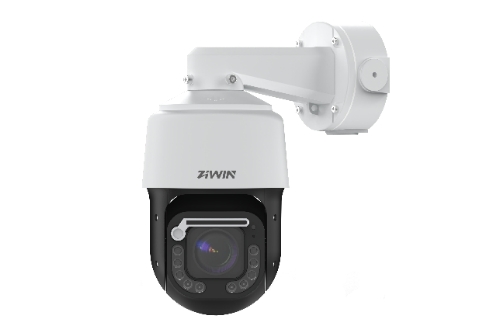
PTZ (Pan-Tilt-Zoom) cameras are critical for surveillance systems, but many users frequently encounter issues like jerky movement, signal loss, or night vision failure. Data shows that 60% of PTZ malfunctions stem from improper installation or maintenance rather than hardware defects.
This article breaks down the 5 most common PTZ camera failures and provides professional solutions to help you:
Extend equipment lifespan
Reduce repair costs
Ensure stable surveillance performance
Possible Causes
· Motor overheating (common in hot climates like the Middle East/Southeast Asia)
· Sand or dust in gears (desert or construction sites)
· Unstable power supply (voltage below 24V AC causes weak movement)
Solutions
✔ Cleaning & Maintenance: Use precision electronic cleaner on gears quarterly
✔ Reapply lubricant: Use wide-temperature grease (-30°C to 120°C, e.g., Molykote)
✔ Upgrade power supply: Install a voltage stabilizer
Possible Causes
· Degraded IR LEDs (lose 50% brightness after ~2 years)
· Dirty lens (rain stains, spiderwebs, fingerprints)
· Faulty IR cut filter (day/night mode switching failure)
Solutions
✔ Lens cleaning: Use isopropyl alcohol + microfiber cloth (never paper towels!)
✔ IR LED test: Check if all LEDs light up in darkness
✔ Manual filter test: Block the light sensor to verify switching
Possible Causes
· RS485 wiring issues (exceeds 1200m or insufficient wire gauge)
· Protocol mismatch (Pelco-D vs. Pelco-P confusion)
· EM interference (near high-voltage lines or inverters)
Solutions
✔ Cable inspection:
· Measure end-point voltage with a multimeter (should be ≥1.5V)
· Use shielded twisted pair cables (AWG18 or thicker)
✔ Protocol setup:
· Verify DIP switch/software settings
· Standardize on Pelco-D (best compatibility)
Possible Causes
· Mechanical wear (loose belts, excessive gear clearance)
· Power-loss memory failure (dead supercapacitor/battery)
· Wind disturbance (outdoor units without wind-resistance mode)
Solutions
✔ Mechanical calibration:
· Run self-learning procedure via software
· Adjust belt tension to 0.5-1mm deflection
✔ Replace power backup:
· Use supercapacitors instead of batteries (3x longer lifespan)
Possible Causes
· Seal degradation (rubber parts need replacement every 3-5 years)
· Cable entry leaks (missing waterproof glands)
· Condensation (in high day-night regions)
Solutions
✔ Emergency response:
· Power off immediately, dry PCBs with compressed air
· Place in a dry cabinet (<10% humidity for 48hrs)
✔ Long-term fixes:
· Apply silicone sealant (e.g., Dow Corning 732) during installation
· Install breather valves to equalize pressure
1. Environment-Adaptive Selection
Choose metal-housed + active cooling models for hot areas
Clean ventilation holes monthly with air guns in dusty environments
2. Scheduled Servicing
Inspect gear wear every 6 months
Replace seals & grease annually
3. Smart Diagnostics
Enable self-test reports (supported by most brands)
Integrate with NVR alarm systems
Q: Why does my PTZ camera occasionally reset itself?
A: Check for oxidized limit switches or power interruptions
Q: Post-rain control failures?
A: Likely water-shorted 485 wires—upgrade to potted waterproof connectors
Q: Cheap vs. expensive PTZ failure rates?
A: Industrial PTZs offer 100,000-hour MTBF (3x better than consumer models)
Right model + Proper installation + Regular maintenance =
✔ 80% fewer failures
✔ 5-8 years longer service life
✔ Mission-critical reliability
Need professional PTZ troubleshooting? We provide global remote support!